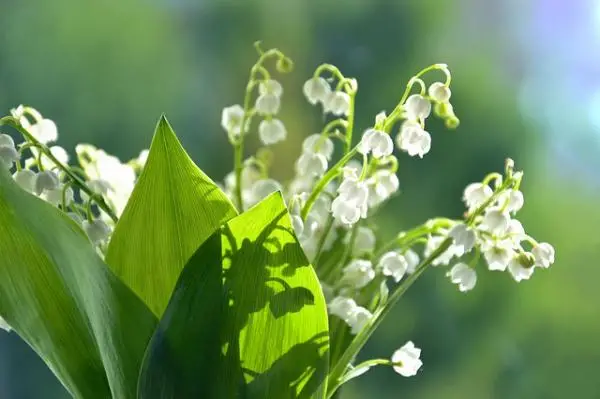Lilies are one of the flowering plants most appreciated by garden enthusiasts due to their elegance and pleasant aroma. Among its more than 100 species is a feral one: the Convallaria majalis , also known as thrush or lily of the valley .
This beautiful outdoor plant will delight any garden and, although it has a certain reputation for being difficult to grow, the truth is that it is not so difficult if we know what to expect. If you want to learn more about how to care for lilies of the valley, keep reading us in this article in which we have prepared a practical gardening guide on caring for lilies of the valley .
Characteristics of lilies of the valley
These are the main characteristics of lilies of the valley :
- For starters, it has to be said that although lilies of the valley tend to be sold as bulbous plants, in reality they are not. The Convallaria majalis grows from a rhizome that remains buried, that’s not exactly the same as a bulb despite maintaining some similarities.
- Its stems usually reach a height of between 15 and 30 cm .
- In the warm months it produces bell-shaped flowers with white or pink petals .
- Despite this, its flowers are not the only striking thing, and it is that its bright green leaves are very decorative and a great tool for carpeting and covering areas of the garden.
- It is a plant with which we must be careful if we have pets or small children, as it is toxic if ingested , so it must be located out of their reach.
- The best time to plant the rhizomes is in autumn, since this plant is grateful to spend a few months of cold before sprouting strongly.
- In France, this plant is a symbol of happiness and good fortune, so it is the one that represents May Day, the day when there is a tradition of giving this flower to those closest to you. Furthermore, it is also the national flower of Finland.

Climate for lilies of the valley
The lily of the valley is native to central Europe , being more difficult to find in the Mediterranean area, since it requires colder climates in general. Taking this into account, it is a plant that needs a cold winter to grow strongly in the warm months , coming to appreciate the presence of frost, despite the fact that its leaves may slightly spoil at very low temperatures: it will recover later. with profit.
In very hot climates, you will probably have trouble keeping this plant in optimal condition, especially if the winters are very mild.

Light and location for the lilies of the valley
The lily of the valley is an outdoor plant , since it needs to be in an airy and clear area. Despite this, in the garden we can plant them both directly in the ground and in pots, although it is important that the latter have drainage holes and no plate underneath. If the placement of the plate is necessary, empty it of water about 10 minutes after each watering.
Regarding light, this plant does not tolerate direct exposure to high intensity sun. Find a shady or semi-shady area , where it is protected from direct impact, but receives ambient light.
Watering the lily of the valley
Irrigation is one of the key points to ensure that our lilies of the valley develop properly. This plant needs the soil or substrate to be humid at all times, although always without waterlogging , as this would cause rotting of the roots and diseases.
Therefore, frequent but not too abundant watering is necessary , which maintains an adequate level of humidity especially during the warm months. Depending on the weather, the usual will be to water every 48 hours in spring and summer and every 5 days in the cold months.

Substrate and compost for lily of the valley
This plant needs a soil rich in organic matter , so it will be necessary to have previously enriched it with worm humus , compost or some other similar contribution. In addition, drainage is also vital to avoid dangerous flooding, so it will be necessary for the soil to be as loose and light as possible.
Add perlite and gravel to the soil mixture for planting the thrush in soil to improve its ability to drain water. To plant this plant in a pot, you can use a mixture of equal parts peat, worm castings and coconut fiber , to which you should then add perlite and vermiculite .
Like many flowering plants, lily of the valley needs regular fertilization in the growing months , so we recommend a contribution of worm castings or some other fertilizer in spring and summer, every 15 days.
Lily of the valley pruning
The pruning lily of the valley plant or muguet is very simple. More than a growth pruning, which many plants do need, what this plant simply needs is a maintenance pruning , which is kept clean of damaged leaves, flowers and stems, cutting them at the end of winter to re-sprout with energy with the arrival of heat.
When you do, try to do it with clean hands or using disinfected pruning shears, which you will also have to disinfect when you finish pruning the plant. In this way, you will avoid the appearance of diseases and pests.
